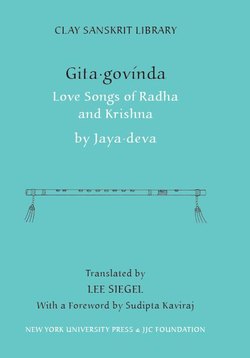Читать книгу Gita Govinda - Jayadeva - Страница 15
На сайте Литреса книга снята с продажи.
Оглавлениеuses all kind of metric resources to create this atmosphere of never-ending surprise in its musicality, and one of its great attractions is the surprising use of Apabhransha meters like pajjhatika, alongside the great staples of Sanskrit meters like the sardula/vikridita.
After it established itself as a classic of Vaishnava devotional literature, the “Gita·govinda” went on to have an increasingly interesting history. Vaishnava sects of later times, particularly the Bengal Vaishnavas who became followers of Chaitanya in the sixteenth and seventeenth centuries, began to read the “Gita·govinda” as a coded text of deep spirituality, using the figure of Radha as an exemplary metaphor of union with God. This strand of reception would eliminate all worldly reference from the verses of the poem, and read them entirely as metaphorical expressions of the anxious communion between God and his ideal devotee.
Historical evidence is largely too meager to speculate about the context of this remarkable text. But in two ways the “Gita·govinda” marks an immense change in literary imagination. The first, as noted above, is the transformation in the figure of Krishna: from the greatest warrior to the greatest lover, who now rules the world by his dominion of all that is beautiful. Literary figures usually bear a connection to social imagination, and the power of moral norms. This change in the nature of the Krishna figure may be linked to a change in the social ideals reflected in literature: literature is seeking a new subject-matter, turning away from the tradition of heroism and warlike virtues to-wards virtues of a very different intimate and intense kind, ________
